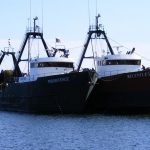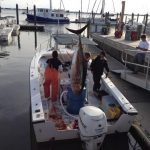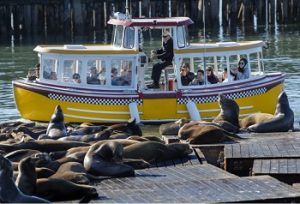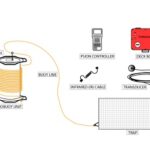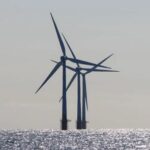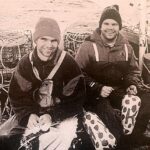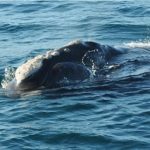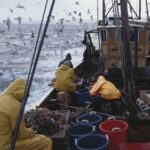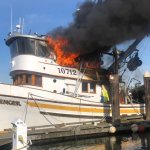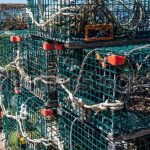Tag Archives: Prince William Sound
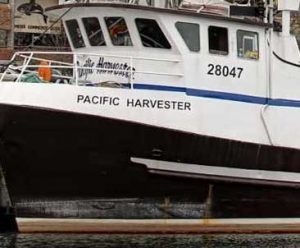
Coast Guard Medevacs crewman from fishing vessel in Prince William Sound
Coast Guard Station Valdez crew members medevaced an 18-year-old male, suffering from a hand injury, from the fishing vessel Pacific Harvester in Prince William Sound, Thursday evening. The station’s crew, including an emergency trauma technician, treated the man’s hand while in transit to a Valdez pier where he was transferred to awaiting emergency medical service personnel for higher care. Watchstanders at Coast Guard Sector Anchorage command center received a report from the master of the Pacific Harvester requesting a medevac for the crewmember who was suffering from a hand injury and displaying signs of shock. >click to read<16:25
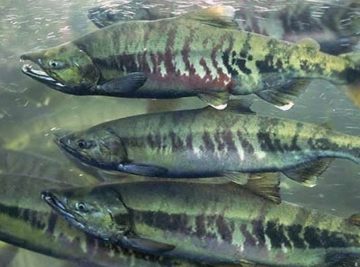
Prince William Sound commercial catch tops 3.5M fish
Commercial harvests in Prince William Sound have reached 3.5 million salmon, even as the surge in the catch in late June slowed somewhat in early July. Through June 10 fishermen delivered to processors an estimated 2,450,601 chums, 1,022,779 sockeyes, 18,461 pinks, 7,829 Chinooks and 459 silvers. Drift gillnetters in the Coghill district alone have brought in over 1.8 million fish, including an estimated 1.7 million chums, 155,704 reds, 1,959 humpies, 386 kings and 94 silvers. Purse seiners in the Montague district had,,, Statewide harvest updates provided by the McDowell Group in Juneau for the Alaska Seafood Marketing Institute show that through June 10 nearly 28 million salmon have been delivered to processors. >click to read<12:55
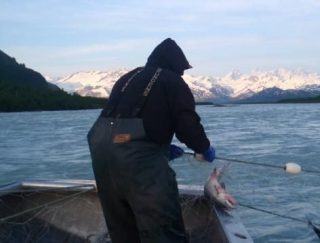
Unexplained sockeye dropoff shuts down Yakutat fishery
Add Yakutat’s wild sockeye run to a growing list of struggling Alaska salmon stocks. The Alaska Department of Fish and Game shut down set net fishermen in the Yakutat District on Thursday after fishery managers determined less than 10 percent of the historical average have returned. Weirs on the Situk River have counted only 1,700 returning sockeye this year. That’s down from an average of 20,000. It’s the smallest return on record for this time in the year and a dropoff managers did not predict. >click to read<11:03
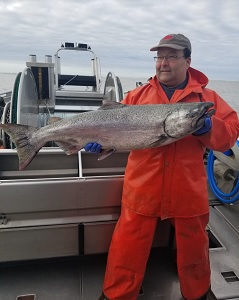
No commercial opener for Copper River salmon fishery
Faced with a sonar count that is the ninth lowest on record since 1978, the Alaska Department of Fish and Game said the Copper River district of Prince William Sound would remain closed to commercial fishing. The midday announcement on June 6 assured that the district would open to subsistence fishing on June 7. Cumulative commercial harvest to date is the second lowest harvest in the last 50 years, ADF&G said in an announcement from its Cordova office. Harvesters were advised, however, that the commercial fishery might open on short notice, should indices of sockeye salmon abundance support such a fishery. >click to read<11:12
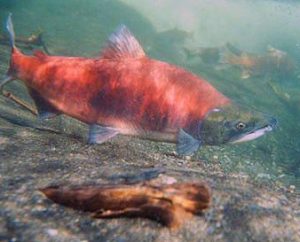
Alaska: Prices are up, but commercial salmon harvests and forecasts are down
As a number of commercial salmon fisheries around the state kick off this week, the outlook for ex-vessel prices is looking good. Fishing economists say between lower run forecasts and strong foreign and domestic demand, commercial fishermen will likely see higher prices this year. But that doesn’t necessarily mean commercial fishermen will earn more this season compared to last year. Andy Wink with Wink Research and Consulting said although prices vary by species and region, most fisheries should see stable or higher prices this year. >click to read<08:20
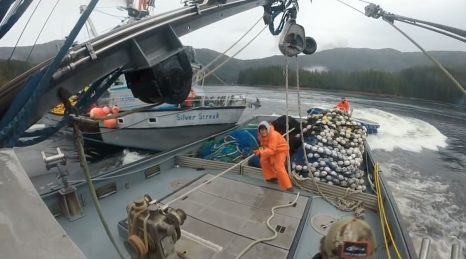
Rammed or shooting the gap? Salmon seiners clash in Prince William Sound criminal case
An unusual criminal case in Cordova that centers on a violent fishing boat collision two years ago is expected to wrap up without jail time. The June 2016 crash between seiners in a Prince William Sound cove near Whittier revealed a dark side of Alaska’s multimillion-dollar pink salmon fishery. Kami Cabana, the 25-year-old third-generation fisherman at the helm of the Chugach Pearl, faced first-degree felony assault charges for what prosecutors called an intentional ramming. Her attorney argued it was Jason Long, the Cordova-based skipper of the Temptation, who was actually at fault: He tried to force his way through a lineup of boats with a dangerous maneuver. Video, >click to read< 11:08
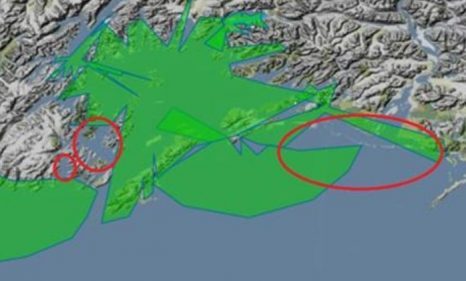
Boats and ships near Prince William Sound, the Coast Guard can’t hear you
If you’re on the waters of Prince William Sound, you’ll have to be extra cautious. That’s because if you run into trouble, depending on where you are, the Coast Guard says they may not hear your distress signal. The Coast Guard announced Friday afternoon that it can’t hear distress VHF transmissions until vessels reach Port Wells in Prince William Sound, specifically on VHF-FM channel 16. If you are in the following areas the Coast Guard won’t be able to hear a distress signal on channel 16: >click to read<09:28
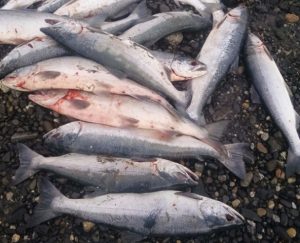
Deadly success?
Twenty-eight years ago, the state of Alaska banned fish farming in favor of salmon ranching. The idea was simple: Catch a bunch of fish, squeeze out their eggs and sperm, mix the two together, hatch the eggs, raise the little fish in a hatchery, dump them in the ocean, wait for them to come back, and net the money. What could possibly go wrong? Maybe this: From 1985 to 1994, before the hatchery program seriously geared up in the Prince William Sound, the commercial catch of sockeye (red) salmon in Cook Inlet averaged about 5.3 million fish per year.>click to read<10:34
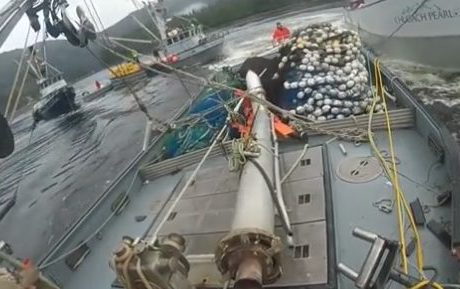
Boat warfare
Even in a state famous for it fish wars, a violent collision between three commercial-salmon fishing boats in Prince William Sound that left a crewman seriously injured in the summer of 2016 has attracted more than its share of attention. But then most Alaska fish wars don’t deteriorate into actual boat-to-boat combat.,,, Court documents early on, however, revealed there was a GoPro camera on board the Temptation when the collision occurred, and now some of that video has emerged. >click to read< 08:01
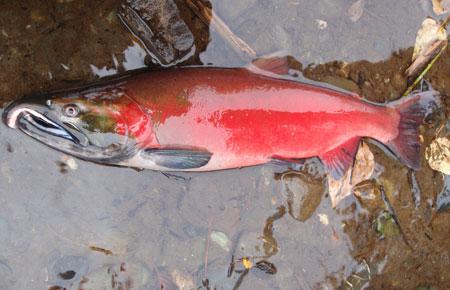
Average year for coho harvest in PWS, but prices are up
Commercial fishing for coho salmon is winding down in Prince William Sound. Gillneters at the mouth of the Copper River are seeing a relatively average year with about 170,000 fish harvested so far. While the harvest is typical, the price this year is not. Coho are fetching about $1.50 per pound at the docks, about double the average price. Alaska Department of Fish and Game Area Management Biologist Jeremy Botz expects fishing to stay open another week. click here to read the story 21:07
Prince William Sound’s pink salmon run shows up late, harvest is underway
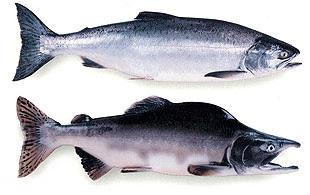 Up until Monday, numbers of pink salmon returning to Prince William Sound looked like they may be a repeat of last year’s dismal run, but the fish are beginning to show up and the harvest is underway. “On Monday, the common property fishery took about 2.5 million fish. Yesterday, it’s looking about 1.2 million,” Charles Russel said, Alaska Fish and Game’s Area Management Biologist for the Prince William Sound area. “Today, initial reports say that fisheries may be close to yesterday, but we’re a little bit behind, but still catching good numbers of fish.” The sudden pick up will have seiners breathing a sigh of relief after last year’s harvest, which was among the worst on record. The federal government officially declared the run in Prince William Sound and others around the state a disaster in January. click here to read the story 08:51
Up until Monday, numbers of pink salmon returning to Prince William Sound looked like they may be a repeat of last year’s dismal run, but the fish are beginning to show up and the harvest is underway. “On Monday, the common property fishery took about 2.5 million fish. Yesterday, it’s looking about 1.2 million,” Charles Russel said, Alaska Fish and Game’s Area Management Biologist for the Prince William Sound area. “Today, initial reports say that fisheries may be close to yesterday, but we’re a little bit behind, but still catching good numbers of fish.” The sudden pick up will have seiners breathing a sigh of relief after last year’s harvest, which was among the worst on record. The federal government officially declared the run in Prince William Sound and others around the state a disaster in January. click here to read the story 08:51
Prince William Sound harvest tops one million fish
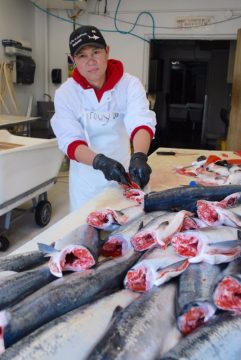 Commercial harvests of red salmon reached 378,000 fish in the Copper River drift district through June 20, as the run and harvest continued to be below forecast, while Chinook catches were above expected. The commercial harvest of sockeyes is still trending consistently below forecast, noted Jeremy Botz, who manages the state’s gillnet salmon fishery from the Cordova office of the Alaska Department of Fish and Game. The good news is that both reds and kings appear to be in great condition and larger than average, Botz said. Sockeyes are weighing 5.6 pounds to 5.7 pounds, and the kings on average have weighed in at about 21 pounds, compared to about 18 pounds in recent years. “They are larger than we have seen in quite a while, by close to three pounds, he said. click here to read the story 13:07
Commercial harvests of red salmon reached 378,000 fish in the Copper River drift district through June 20, as the run and harvest continued to be below forecast, while Chinook catches were above expected. The commercial harvest of sockeyes is still trending consistently below forecast, noted Jeremy Botz, who manages the state’s gillnet salmon fishery from the Cordova office of the Alaska Department of Fish and Game. The good news is that both reds and kings appear to be in great condition and larger than average, Botz said. Sockeyes are weighing 5.6 pounds to 5.7 pounds, and the kings on average have weighed in at about 21 pounds, compared to about 18 pounds in recent years. “They are larger than we have seen in quite a while, by close to three pounds, he said. click here to read the story 13:07
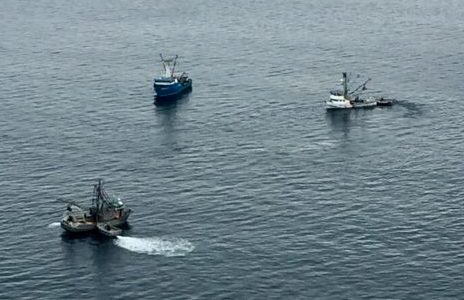
Coast Guard, good Samaritans assist vessel taking on water in Prince William Sound, Alaska
Coast Guard and good Samaritan crews assisted the crew of the fishing vessel Kodiak Sockeye after the vessel began taking on water near Knowles Bay, Prince William Sound, Alaska, Thursday. Coast Guard Sector Anchorage watchstanders received a report from the vessel’s crew that the engine compartment was flooding. Watchstanders issued an urgent marine information broadcast, requested the launch of the Jayhawk and RB-M crews and requested the diversion of the Sycamore crew. Two good Samaritan vessels, the Rocky B and the Remedy, responded to the UMIB. click here to read the story, more images, video 10:07
Oil spill spared fish
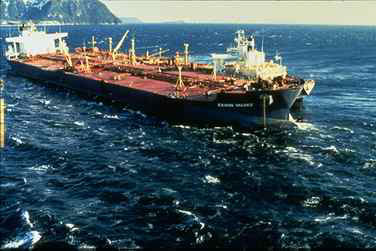 Almost 30 years after the oil tanker Exxon Valdez hit Bligh Reef and smeared Prince William Sound with more than 11 million gallons of Alaska crude oil, a team of state and federal scientists have concluded the spill – as bad as it looked and as much impact as it had on marine mammals and birds – appears to have done no real damage to fisheries. “We found no evidence supporting a negative EVOS (Exxon Valdez Oil Spill) impact on herring, sockeye salmon, or pink salmon productivity, and weak evidence of a slightly positive EVOS signal on Copper River Chinook (king) salmon productivity,” the study says. “It is unclear how EVOS may have impacted Chinook salmon positively.” Somewhat surprisingly, however, the study found two non-oil spill events – one natural and one manmade – that appear to have caused significant changes in Sound fisheries. And one of them, a naturally occurring spill of fresh water, appears to be what crippled herring stocks there. click here to read the story link to the study 20:16
Almost 30 years after the oil tanker Exxon Valdez hit Bligh Reef and smeared Prince William Sound with more than 11 million gallons of Alaska crude oil, a team of state and federal scientists have concluded the spill – as bad as it looked and as much impact as it had on marine mammals and birds – appears to have done no real damage to fisheries. “We found no evidence supporting a negative EVOS (Exxon Valdez Oil Spill) impact on herring, sockeye salmon, or pink salmon productivity, and weak evidence of a slightly positive EVOS signal on Copper River Chinook (king) salmon productivity,” the study says. “It is unclear how EVOS may have impacted Chinook salmon positively.” Somewhat surprisingly, however, the study found two non-oil spill events – one natural and one manmade – that appear to have caused significant changes in Sound fisheries. And one of them, a naturally occurring spill of fresh water, appears to be what crippled herring stocks there. click here to read the story link to the study 20:16
Prince William Sound humpy forecast of 67.16 million fish is largest on record!
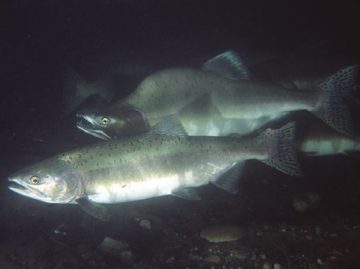 State fisheries biologists are forecasting what would be the largest pink salmon run on record into Prince William Sound, with liberal fishing time and area anticipated if the returns prove as strong as expected. Meanwhile, in the Copper River district, the first commercial fishing period is expected to begin during the week of May 14, with harvest projections of 889,000 sockeyes, 207,000 cohos and 4,000 Chinook salmon. The forecast calls for a pink salmon total run of 67.16 million fish, with a commercial harvest of 58.92 million pinks. That would be in marked contrast to 2016, where the run forecast was 40.9 million pinks, but the commercial harvest of 8.65 million pinks was the lowest harvest since 2002 and the second lowest in 20 years, biologists said. click here to read the story 15:08
State fisheries biologists are forecasting what would be the largest pink salmon run on record into Prince William Sound, with liberal fishing time and area anticipated if the returns prove as strong as expected. Meanwhile, in the Copper River district, the first commercial fishing period is expected to begin during the week of May 14, with harvest projections of 889,000 sockeyes, 207,000 cohos and 4,000 Chinook salmon. The forecast calls for a pink salmon total run of 67.16 million fish, with a commercial harvest of 58.92 million pinks. That would be in marked contrast to 2016, where the run forecast was 40.9 million pinks, but the commercial harvest of 8.65 million pinks was the lowest harvest since 2002 and the second lowest in 20 years, biologists said. click here to read the story 15:08
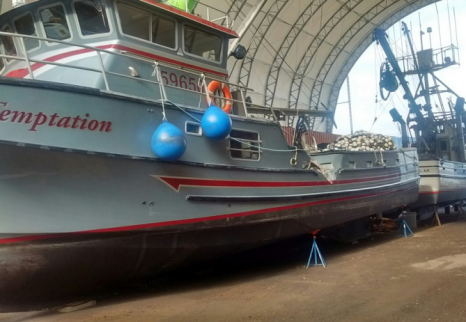
A real fish war – not just another Alaska yelling match
A real fish war – not just another Alaska yelling matching about who gets to catch what – was waged in Prince William Sound this August with one boat nearly sunk, one crewman seriously injured, and the Alaska Department of Law now pondering whether to file assault or other charges. The weapons of choice in the case? 58-foot salmon seiners. The alleged aggressor? One-time state ski racer Kami Cabana from Girwood. She was at the controls of the F/V Chugach Pearl when it t-boned the F/V Temptation. “I got really lucky when she hit me,” Temptation skipper Jason Long said in a telephone interview with craigmedred.news this week. There were davits fastened to the side of the Temptation where the Pearl struck amidships. They absorbed some of the impact of the ramming. Had the Pearl hit just a little farther aft, Long said, it could have ruptured the Temptations fish hold and put his ship in serious danger. Had the Pearl hit just a little farther forward, it would have smashed the Temptation’s cabin. Long said he wanted at first to think the collision an accident, but Cabana’s behavior afterward – with a Temptation crewman down on the deck and bleeding profusely – argued otherwise. Read the full story here 09:51
Poor production of pink salmon mystifies
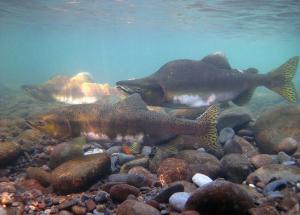 Weather patterns contributed to a screwy sockeye run in 2015, and this year the same is happening to pinks, the second-largest salmon harvest in Alaska. In 2016, commercial fishermen have only harvested 8 million pinks as of Aug. 15 in Prince William Sound, the state’s largest pink run. Only one-third are hatchery fish, a marked turn from last years’ massive pink haul of 96 million in the Sound, a 20-year record-breaker over 93 million pinks in 2003. Of these, 80 percent were hatchery fish. Southeast Alaska’s run is doing as badly with only 13.4 million harvested, less than half the already-substandard forecast of 34 million fish. Dan Gray, the area management biologist for Southeast Alaska’s commercial fisheries, said he and fishermen both are stumped as to the poor run’s nature, but seem to think the warm Gulf of Alaska “blob” of 2015, which raised surface temperatures 2 degrees Celsius, has some impact. “Maybe it wasn’t the best thing for high sea survival,” he said. Hope for a midseason pickup in returns is dim. Read the rest here 21:07
Weather patterns contributed to a screwy sockeye run in 2015, and this year the same is happening to pinks, the second-largest salmon harvest in Alaska. In 2016, commercial fishermen have only harvested 8 million pinks as of Aug. 15 in Prince William Sound, the state’s largest pink run. Only one-third are hatchery fish, a marked turn from last years’ massive pink haul of 96 million in the Sound, a 20-year record-breaker over 93 million pinks in 2003. Of these, 80 percent were hatchery fish. Southeast Alaska’s run is doing as badly with only 13.4 million harvested, less than half the already-substandard forecast of 34 million fish. Dan Gray, the area management biologist for Southeast Alaska’s commercial fisheries, said he and fishermen both are stumped as to the poor run’s nature, but seem to think the warm Gulf of Alaska “blob” of 2015, which raised surface temperatures 2 degrees Celsius, has some impact. “Maybe it wasn’t the best thing for high sea survival,” he said. Hope for a midseason pickup in returns is dim. Read the rest here 21:07
RECONSIDERATION PETITION – Petition urges reopener of Exxon spill claim decision
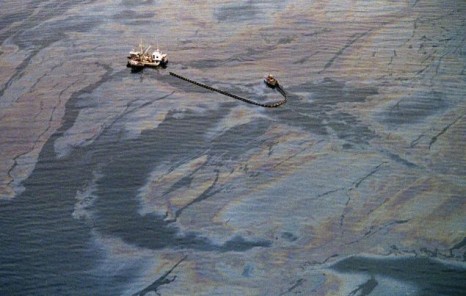 Two biologists with extensive experience in the Prince William Sound region are asking the state of Alaska and federal government to retain their option to make a claim by June 2016 against Exxon for the 1989 oil spill disaster. The announcement from Kate McLaughlin, president and executive director of Prince William Soundkeeper, and Rick Steiner, of Oasis Earth, on Oct. 17, came in the wake of a decision by the state and federal governments to drop their claim for further damages from Exxon. Read the rest here 09:42
Two biologists with extensive experience in the Prince William Sound region are asking the state of Alaska and federal government to retain their option to make a claim by June 2016 against Exxon for the 1989 oil spill disaster. The announcement from Kate McLaughlin, president and executive director of Prince William Soundkeeper, and Rick Steiner, of Oasis Earth, on Oct. 17, came in the wake of a decision by the state and federal governments to drop their claim for further damages from Exxon. Read the rest here 09:42
Prince William Sound salmon catch exceeds 104 M fish
State fisheries officials estimated that commercial fishermen in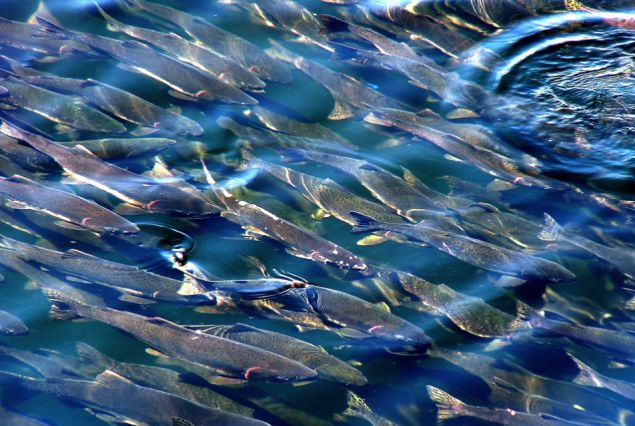 have landed 104,085,000 salmon through Oct. 2, and continued to urge gillnet fishermen to assure a market before harvesting more fish. The words of caution were contained in an Alaska Department of Fish and Game fishery update Oct. 2 for Prince William Sound. To date the statewide preliminary Alaska commercial salmon harvest blue sheet shows that the harvest from Prince William Sound includes 98,215,000 humpies, 3,133,000 sockeyes, 2,515,000 chums, 199,000 cohos and 24,000 Chinook salmon. Read the rest here 09:21
have landed 104,085,000 salmon through Oct. 2, and continued to urge gillnet fishermen to assure a market before harvesting more fish. The words of caution were contained in an Alaska Department of Fish and Game fishery update Oct. 2 for Prince William Sound. To date the statewide preliminary Alaska commercial salmon harvest blue sheet shows that the harvest from Prince William Sound includes 98,215,000 humpies, 3,133,000 sockeyes, 2,515,000 chums, 199,000 cohos and 24,000 Chinook salmon. Read the rest here 09:21
EXXON VALDEZ RESPONSIBLE FOR CONTINUED COLLAPSE OF ALASKAN FISHERIES, STUDY SUGGESTS
 Fish stocks in Alaska’s Prince William Sound may still be affected by the 1989 Exxon Valdez oil spill, according to a report from scientists at the National Oceanic and Atmospheric Administration (NOAA). The report finds that the exposure of crude oil to Pacific herring and pink salmon embryos may affect their development into adults. The report challenges the notion that the collapse of herring stocks was unrelated to the Exxon spill, which was long held on the basis that the four-year gap between the spill and the herring collapse in 1993 suggested another cause. Read the rest here 16:42
Fish stocks in Alaska’s Prince William Sound may still be affected by the 1989 Exxon Valdez oil spill, according to a report from scientists at the National Oceanic and Atmospheric Administration (NOAA). The report finds that the exposure of crude oil to Pacific herring and pink salmon embryos may affect their development into adults. The report challenges the notion that the collapse of herring stocks was unrelated to the Exxon spill, which was long held on the basis that the four-year gap between the spill and the herring collapse in 1993 suggested another cause. Read the rest here 16:42
Prince William Sound Herring count looking up
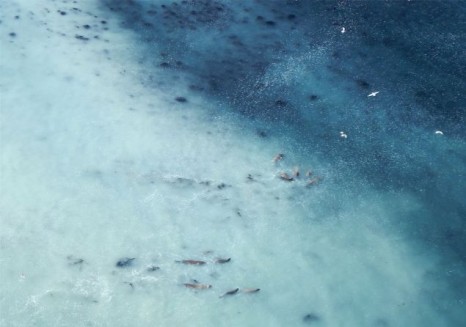 One thousand feet over Prince William Sound, the plane tilted sideways, its left wing stretching toward the waves below as pilot Mike Collins circled in for a closer look. The water sparkled. “There’s a school of age one herring,” said Scott Pegau, turning in his seat, “right up against the beach.” Against the curve of the shore, a dark cloud formed below the surface of the Sound, where hundreds of juvenile herring clustered. Their school is among 1,227 counted so far this season along the islands and inlets off the Prince William Sound. Video, Read the rest here 11:24
One thousand feet over Prince William Sound, the plane tilted sideways, its left wing stretching toward the waves below as pilot Mike Collins circled in for a closer look. The water sparkled. “There’s a school of age one herring,” said Scott Pegau, turning in his seat, “right up against the beach.” Against the curve of the shore, a dark cloud formed below the surface of the Sound, where hundreds of juvenile herring clustered. Their school is among 1,227 counted so far this season along the islands and inlets off the Prince William Sound. Video, Read the rest here 11:24
SILVER CATCH – Coho catch lifts Prince William Sound salmon harvest total
 Commercial fishermen in Prince William Sound caught another 142,000 silver salmon over the seven-day period ended Sept. 15, lifting the preliminary season catch of coho to 549,000 fish. The surge in silver salmon harvests,, Read the rest here 12:24
Commercial fishermen in Prince William Sound caught another 142,000 silver salmon over the seven-day period ended Sept. 15, lifting the preliminary season catch of coho to 549,000 fish. The surge in silver salmon harvests,, Read the rest here 12:24
Alaska’s Copper River salmon fly to Seattle
 An Alaska Air Cargo plane from Cordova touched down Friday morning and the pilots emerged with a 48-pound king salmon. They carried it down a red carpet and delivered it to three chefs for a ceremonial cook-off at Sea-Tac Airport. The plane carried 24,100 pounds of salmon that were caught Thursday when the commercial gillnet season opened in Prince William Sound. Read more here 12:41
An Alaska Air Cargo plane from Cordova touched down Friday morning and the pilots emerged with a 48-pound king salmon. They carried it down a red carpet and delivered it to three chefs for a ceremonial cook-off at Sea-Tac Airport. The plane carried 24,100 pounds of salmon that were caught Thursday when the commercial gillnet season opened in Prince William Sound. Read more here 12:41
Coast Guard monitoring intentionally grounded Tender Vessel 65-foot Hana Cove in Prince William Sound, Alaska
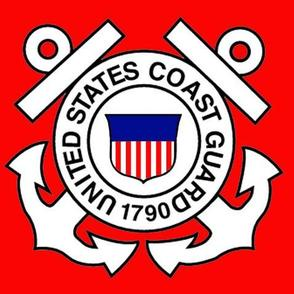 Coast Guard Marine Safety Unit Valdez personnel are monitoring the salvage of the 65-foot fishing tender Hana Cove after the vessel was intentionally grounded on Culross Island in Prince William Sound, Thursday. continued@uscgnews
Coast Guard Marine Safety Unit Valdez personnel are monitoring the salvage of the 65-foot fishing tender Hana Cove after the vessel was intentionally grounded on Culross Island in Prince William Sound, Thursday. continued@uscgnews
Big skate retention prohibited for Prince William Sound, Cook Inlet, central Gulf of Alaska
![]() Fishermen in Cook Inlet and Prince William Sound targeting halibut and groundfish may not retain incidentally-caught big skates as of noon today. Skates cannot be retained for the rest of the year. Instead, they must be released with minimum injury. continued
Fishermen in Cook Inlet and Prince William Sound targeting halibut and groundfish may not retain incidentally-caught big skates as of noon today. Skates cannot be retained for the rest of the year. Instead, they must be released with minimum injury. continued


































